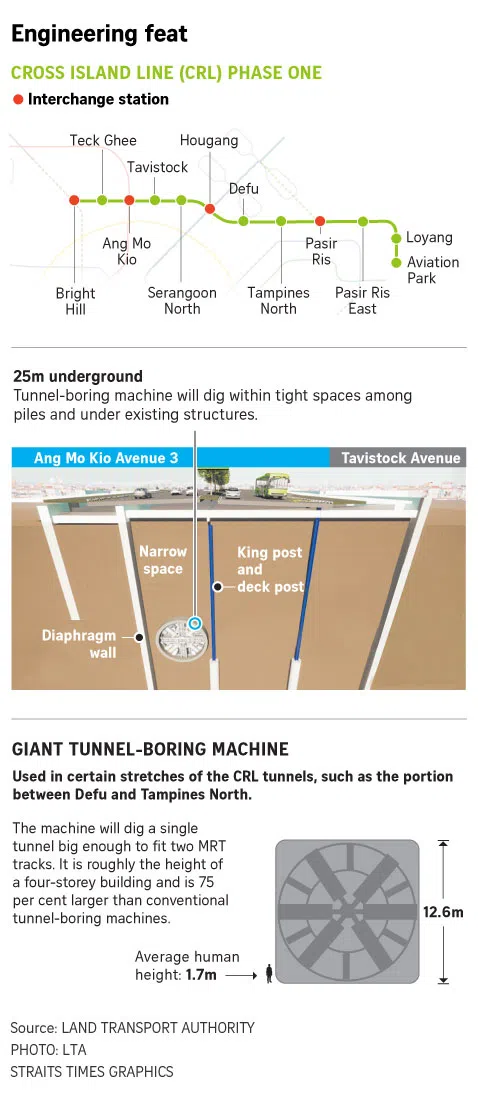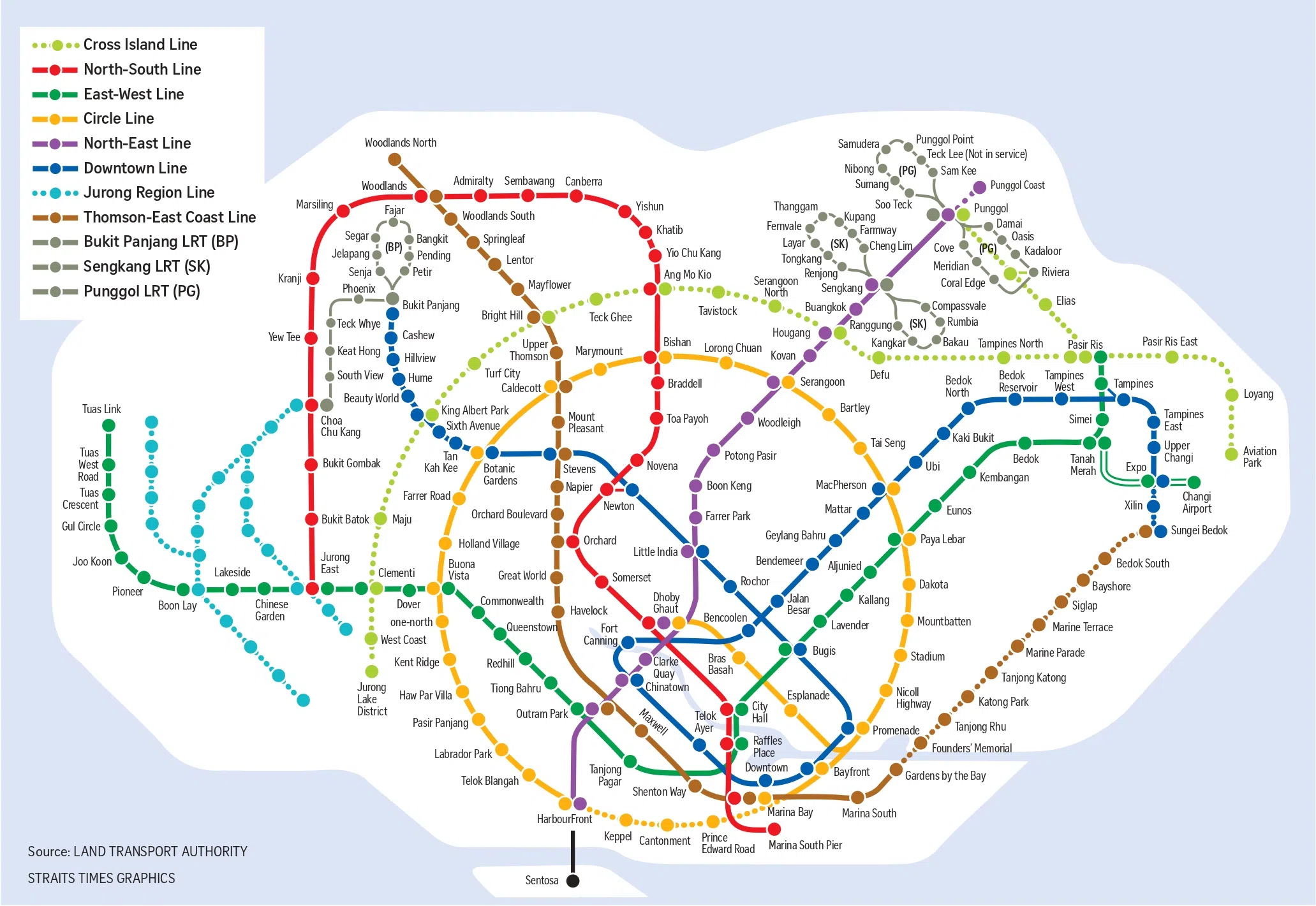Cross Island Line work begins, 12 MRT stations ready by 2030 including Ang Mo Kio and Pasir Ris
Sign up now: Get ST's newsletters delivered to your inbox
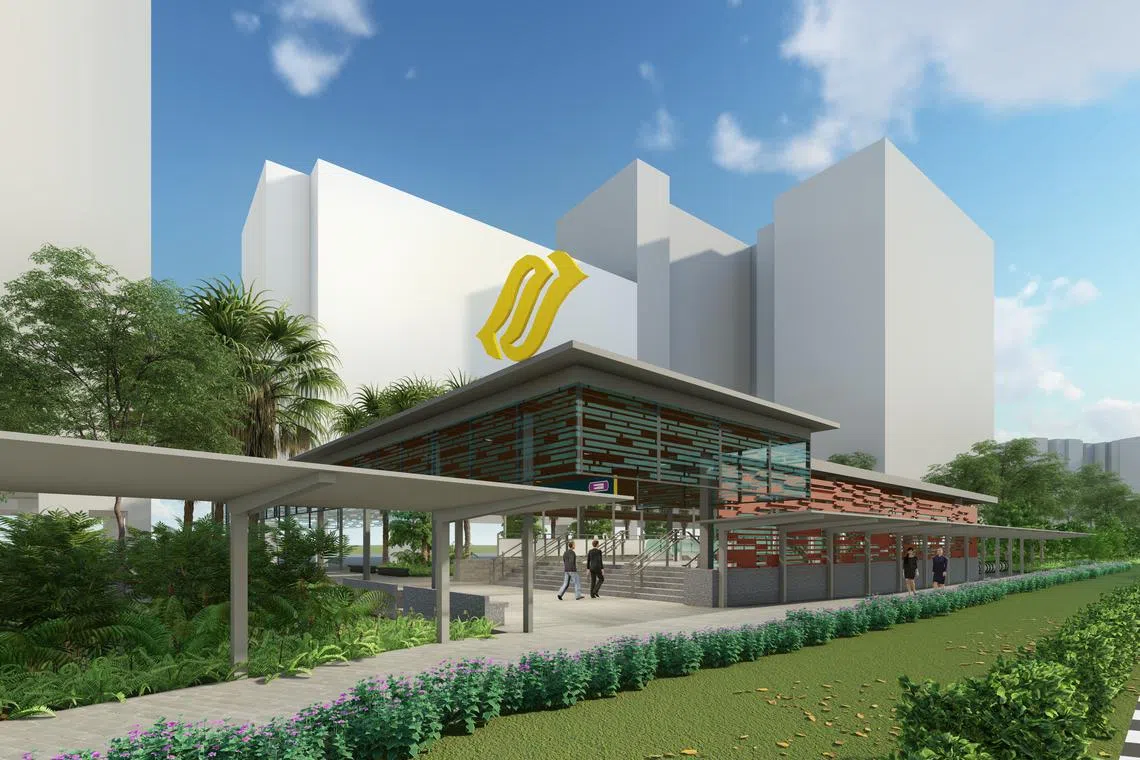
Phase 1 will span 29km with 12 stations from Aviation Park to Pasir Ris, and Hougang to Bright Hill.
PHOTO: LTA
Follow topic:
SINGAPORE – Work has started on Singapore’s eighth and longest underground MRT line, which is expected to sharply cut down travelling time for commuters.
The Cross Island Line (CRL) is among the most challenging rail projects undertaken by the Republic. Phase one will span 29km, with 12 stations
This portion of the line is expected to be completed by 2030, serving commuters living and working in Changi, Loyang and Ang Mo Kio, said the Land Transport Authority (LTA).
Speaking at the groundbreaking ceremony at the site of the future CRL Bright Hill station on Wednesday, Transport Minister S. Iswaran said that with the CRL, the time taken for a Sin Ming resident to travel from Bright Hill to Pasir Ris East is expected to be cut by more than half, from 80 minutes to 30 minutes.
The Bright Hill station will be connected to a new Transit Priority Corridor along Sin Ming Avenue, which will be ready in 2029.
This is a 2km stretch of road that is integrated with bus lanes, wider footpaths and dedicated cycling paths or shared paths. Commuters can conveniently choose to switch to take the bus, walk or cycle to get to their destinations.
Besides connecting commuters to the new MRT station, the Transit Priority Corridor will also link residents in the Sin Ming area to Bishan-Ang Mo Kio Park.
The construction of the CRL has been split into three phases. When completed, it will be more than 50km long, making it Singapore’s longest fully underground line, and will serve developments in the eastern, western and north-eastern parts of the island.
The LTA projects daily ridership to be more than 600,000 in the initial years, and this number will increase to over one million.
Mr Iswaran pointed out that the wide variety of soil conditions along different stretches poses engineering challenges, and added precautions are needed to ensure safety.
He said that other than engineering innovations, the project requires precision and meticulous planning to minimise disruption to residents, roads and existing rail lines.
Phase two of the CRL,
The LTA did not give the timeline for completion of the final phase of the CRL, explaining that phase three is still being studied.
Mr Iswaran highlighted rail expansion as a “key thrust” in the overall effort to enhance Singapore’s transport system “from the first to the last mile”.
He said: “By 2030, we will implement dedicated bus lanes on 60km of Transit Priority Corridors, add 800km of cycling paths and repurpose roads to have wider footpaths and pedestrianised streets.
“By 2040, we will add 150km of covered linkways between train stations, residential areas and amenities.”
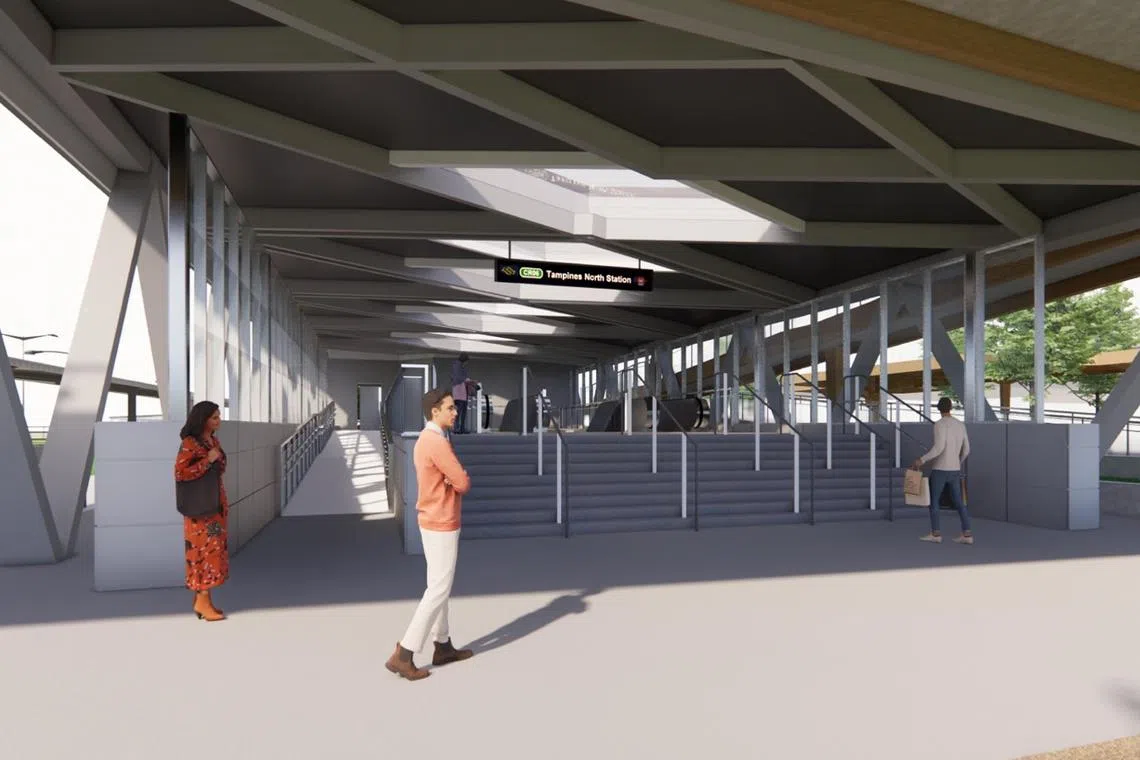
The LTA projects that more than 600,000 commuters will be using the line daily in the initial years and this number will increase to over one million.
PHOTO: LTA
The Pasir Ris CRL station will hold the record of being the deepest station in Singapore at 47m underground, roughly equivalent to the height of a 16-storey Housing Board flat.
Where the Pasir Ris CRL station meets the East-West Line, a low headroom mobile crane is being deployed to work within the space constraints at the site.
At Teck Ghee station, a rectangular tunnel-boring machine will be used to build the underground linkways.
The same method, which the LTA said is more effective than the conventional way of digging a trench, was used in the construction of two sites at Havelock and Stevens stations on the Thomson-East Coast Line.
Large-diameter tunnel-boring machines will be used to construct parts of the CRL, such as the stretch that connects Aviation Park station and Loyang station. Measuring 12.6m tall, the equivalent of a four-storey building, the machine can bore one tunnel for two MRT tracks, instead of having to bore twin tunnels.
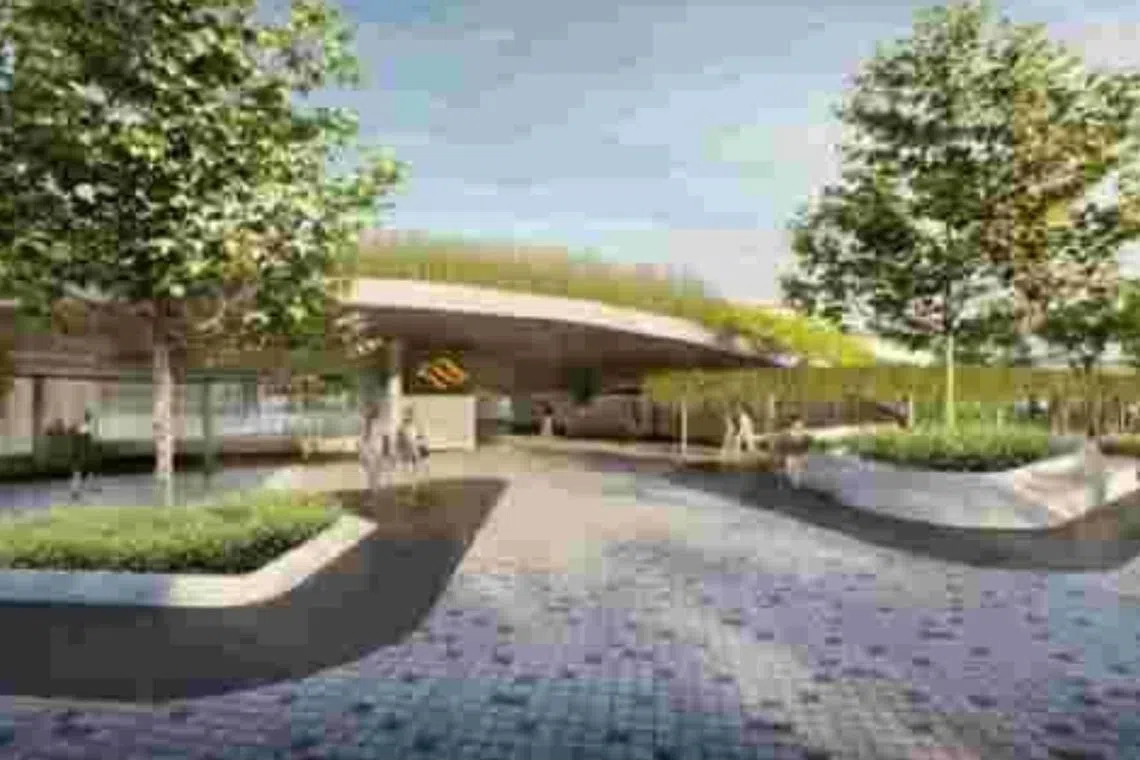
At Teck Ghee station, a rectangular tunnel-boring machine will be used to build the underground linkways.
PHOTO: LTA
The Changi East Depot,
The depot, like MRT stations along the upcoming Jurong Region Line, will be fitted with photovoltaic solar panels to generate renewable energy for its operations. It will house the operations control centre and maintenance facilities for up to 70 trains.
Almost half of the CRL stations are interchanges with other train lines, said the LTA, so it will be easier for commuters to travel across the rail network.
Correction note: The daily ridership on the completed CRL line was previously described in terms of number of commuters. This has been edited for clarity.
